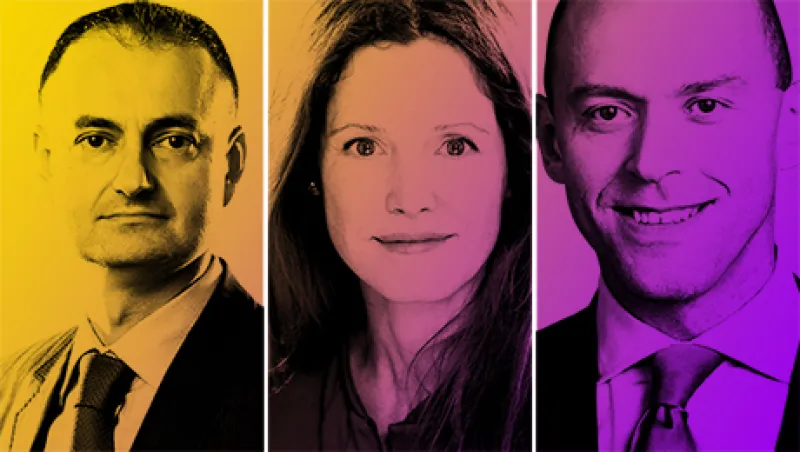In January the European Central Bank announced an aggressive program of quantitative easing — asset purchases of €60 billion ($70 billion) a month, beginning next month and continuing through at least September 2016 — that surpassed the expectations of even the most optimistic market observers.
“The ECB’s QE program surprised markets, despite already very high expectations, by being open-ended,” observes Athanasios Vamvakidis, director of European foreign exchange strategy at Bank of America Merrill Lynch in London. “Up until now, the doves had to persuade the hawks that things were bad enough to act. From now on, the hawks will have to persuade the doves that things are good enough to stop or buy less. As long as inflation remains low, the ECB will keep buying and buying and buying.”
James Reid, who oversees fixed-income strategy at Deutsche Bank in London, points out that this year and next will see “more global central bank buying of assets than any of the last three years — and one of the largest years on record. This is even without the [U.S. Federal Reserve] contributing.”
Investors cheered the ECB’s commitment to injecting a minimum of €1.1 trillion into the economy, with European stock prices surging on the news, bond yields falling, credit default swap spreads tightening and the euro plunging to $1.11, its lowest level against the dollar in more than 11 years. But questions remain as to whether the scheme will accomplish its goals of spurring faster economic growth, higher consumer prices and lower unemployment across the region.
Many portfolio managers will look to the sell side for answers once the bond buying begins and the impact of the program becomes clearer, and there’s no shortage of analysts eager to share their insights. The top spot on this year’s All-Europe Fixed-Income Research Team, Institutional Investor’s annual ranking of the region’s most highly regarded credit analysts and strategists, is occupied by two firms: Bank of America Merrill Lynch, which rises from second place, and J.P. Morgan, now in its fifth straight year at No. 1. Each captures 14 positions in the 18-sector survey. Barclays and Deutsche Bank tie for third place, with 11 positions each, while Morgan Stanley and Royal Bank of Scotland share the fifth tier, with five spots apiece. Among these six firms RBS is the only one whose team position total isn’t down from last year.
The navigation table at right includes links that lead to tables showing firms ranked by total number of positions overall and by their totals in each grouping (Economics & Strategy, High Yield and Investment Grade). Each of these leaders tables includes a companion roster showing how the firms fare when their results are weighted, with a rating of 4 assigned to each first-place position, 3 to each second-place position, and so on.
Click on the Best Analysts of the Year to view the teams in first, second and third places. Also available is a list of teams that earn a runner-up spot in each sector (where applicable). Information about teams in the second and third positions, and runners-up, is available to subscribers only.
Reid, who pilots the crews that capture first place in Fixed-Income Strategy (for a fifth consecutive year) and High-Yield Strategy (for a third year running), and second place in Investment-Grade Strategy (down a notch from last year), anticipated most — but not all — of the ECB’s moves. He says he didn’t expect the central bank to keep the program operating even if inflation doesn’t reach its target of roughly 2 percent. “As such, this is more certain and more open-ended, and we may need to eventually move our already-aggressive positive spread forecasts even tighter,” he contends. “However, there are risks in 2015 that could make markets volatile even if the path is tighter credit spreads.”
Hazards include slowing growth in China, political instability in Russia, a credit event related to collapsing oil prices and aggressive action by the Fed, such as raising interest rates too soon or too much, Reid says.
Does the Deutsche Bank strategist think this QE package will be successful? “In terms of growth, in the short term [the price of] oil may be more important in giving a cyclical boost, and the ongoing Russia issue may also be a bigger short-term driver — in either direction,” Reid believes. “However, the currency fall that the anticipation and deliverance of QE have brought should also help edge growth and inflation up by a few tenths of a percentage point. Indeed, most of the economic gains of QE will likely be limited to currency impacts.”
In the long term, he adds, the bond-buying scheme could make things worse in the euro zone if the various member countries don’t implement such structural reforms as increased investment activity, improved job creation and higher productivity.
In the meantime, Reid and his associates are stressing to clients that 2015 will be a year of spread compression in corporates and peripherals. “We would buy single-Bs, which, although illiquid, are the cheapest part of the European credit market,” he explains. “This is not a view that is based on optimism on the medium-to-long-term health of the European economy, but purely based on technicals and likely flows.”
Vamvakidis, whose team at BofA Merrill debuted in second place last year in Currency & Foreign Exchange and this year rises to first place, also sees reasons to be cautious. “We have been bearish on the euro against the dollar, but the euro weakened beyond our expectations in the weeks leading up to and following the ECB action,” he acknowledges.
Early in 2014 he and his colleagues predicted that the currency would fall as the region’s economic outlook deteriorated, and the central bank would be forced to intervene. They were right. The ECB — “the only major central bank to avoid QE during the global crisis,” he notes — ignored negative signs in the first half of the year. The currency, which stood at roughly $1.40 in May, began to decline against the dollar (sliding to $1.21 by year-end), and the market began to price in the inevitability of QE.
“Ahead of the most anticipated ECB meeting in recent years, we had argued that the risks for [euro-to-dollar pairs] were balanced but that open-ended QE would be negative for the euro and pointed to downside risks to our projections,” Vamvakidis says. “Following the aggressive ECB action, we marked-to-market our projections, keeping a weakening [euro-to-dollar] path. We are now projecting EUR/USD at $1.10 by the end of 2015 and $1.05 by the end of 2016, a change from $1.20 and $1.15, respectively.”
As to whether the central bank has made the right move, time will tell, he adds. “Euro zone data could start improving in the second and third quarters of the year as the weak euro, low oil prices and positive spillovers from fast growth in the U.S. start to positively affect the economy,” the analyst maintains. “It will be too early for QE to have played a role, but such an improvement in data, even if small, could also give the impression that it has started to make a difference.”
More to the point, the initiative was “necessary and long overdue,” he says. “However, as [ECB president Mario] Draghi has also argued, QE will have to be complemented with better coordination of fiscal policies and more progress in structural reforms, in both core and periphery countries, to have a chance to work.”
What’s the best way for investors to play this market? “Our year-ahead trades focus on buying volatility, avoiding crowded positions and investing in some contrarian trades,” Vamvakidis says. “For example, our preferred trade to express a bullish U.S. dollar position has been to sell the Australian dollar, and this trade has already done very well. We like selling the New Zealand dollar against the Japanese yen, as a contrarian trade. We also like buying sterling volatility ahead of the U.K. elections,” which will be held in May.
One industry certain to benefit from quantitative easing is Banking & Financial Services, according to Jacqueline Ineke, whose Morgan Stanley squad is celebrating its fifth straight year as sector champions.
“We already had a generically bullish view on bank debt into 2015, partly based on the full expectation of a supportive ECB from a monetary policy perspective,” the Zurich-based team leader explains.
Within that broad view the analysts selected tranches and names in part owing to the ECB’s new role as euro zone banks supervisor, a responsibility it assumed in November. “New rules coming out on loss-absorbing capacity at banks mean that fears of heavy tier-2 issuance will be rife,” she contends. “Although we actually have a low estimate for tier-2 issuance this year — €45 billion gross — we believe the fear will cause the sector to underperform senior and legacy tier 1s, in general. Hence, we moved down from our tier-2 overweight back in autumn of last year.”
Ineke and her teammates recommend taking positions in U.K. bank-level subordinated and senior debt, which she considers “dying asset classes.” They are selling the senior debt of U.K.-based bank holding companies but buying their subordinated debt because of new rules that took effect in January governing how authorities will handle distressed financial institutions. “The new normal will always be resolution, not liquidation, and bank debt should be priced with resolution action in mind,” Ineke says.
The analysts are also constructive on Italian and Irish bank debt, particularly at the senior and tier-2 levels, but recommend steering clear of institutions exposed to volatility in Central and Eastern Europe and Russia; examples include France’s Société Générale and Italy’s UniCredit.
The 2015 All-Europe Fixed-Income Research Team reflects the views of more than 740 investment professionals at some 370 buy-side institutions that collectively manage an estimated $6.3 trillion in European fixed-income assets.






